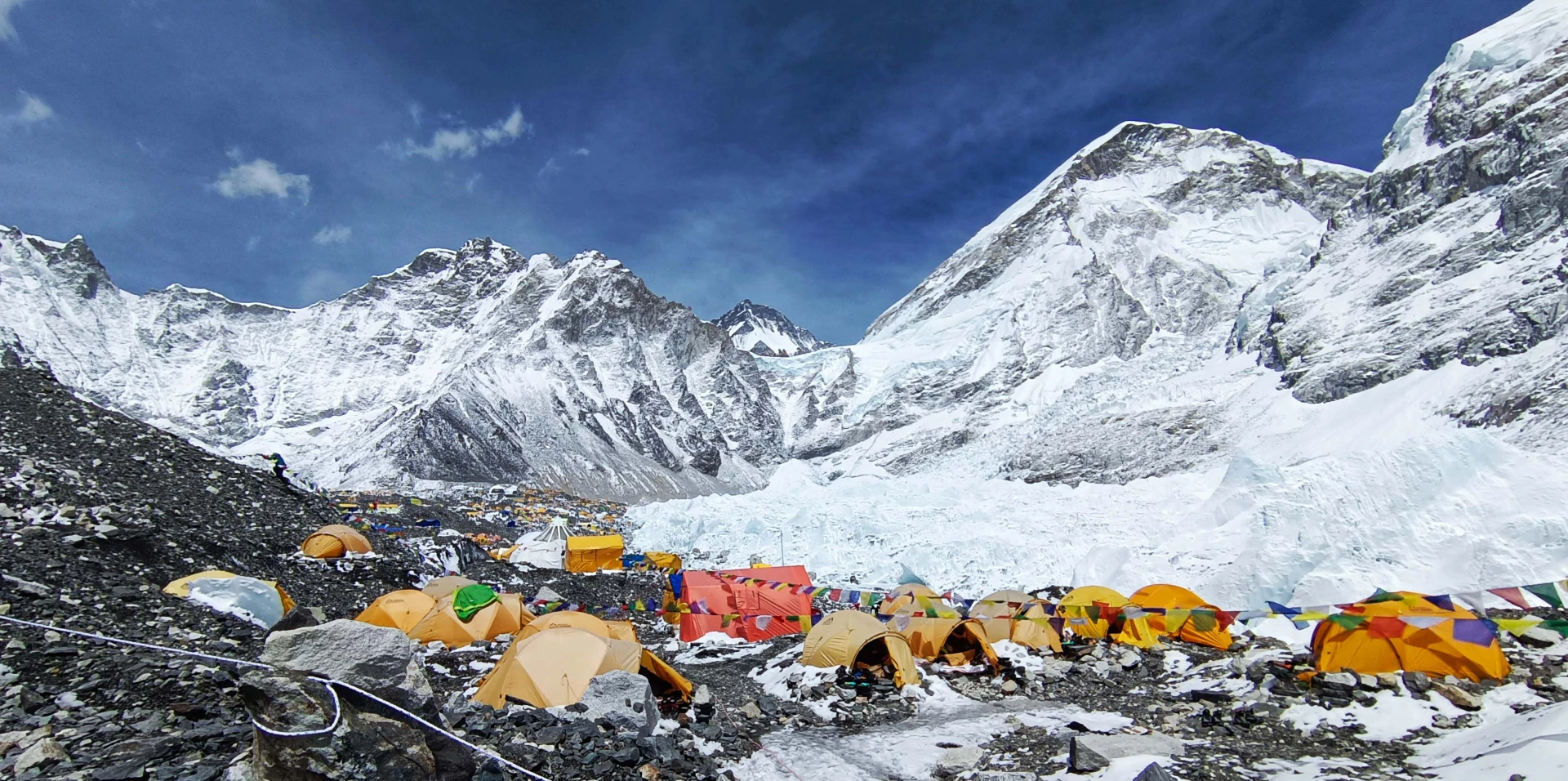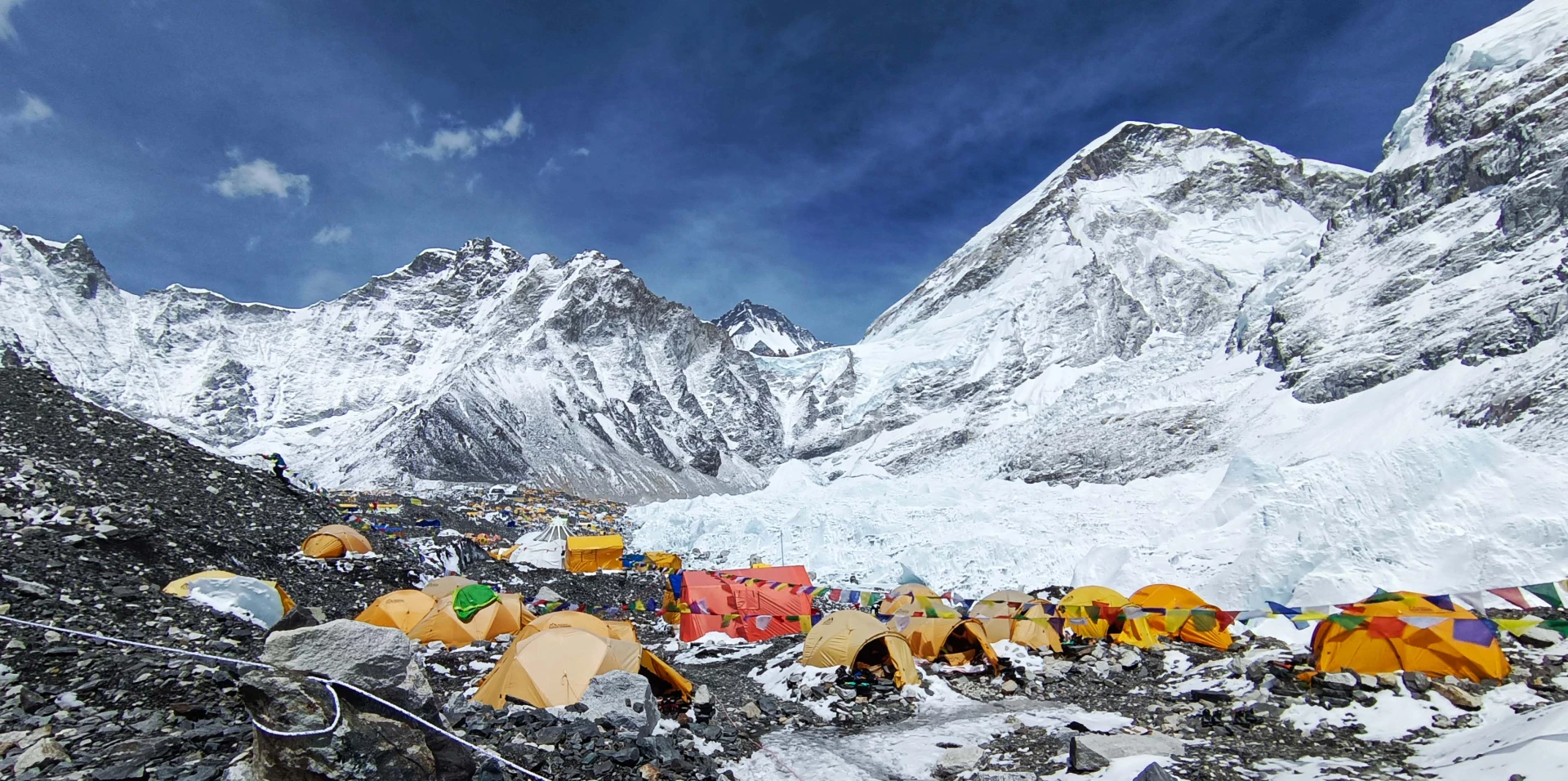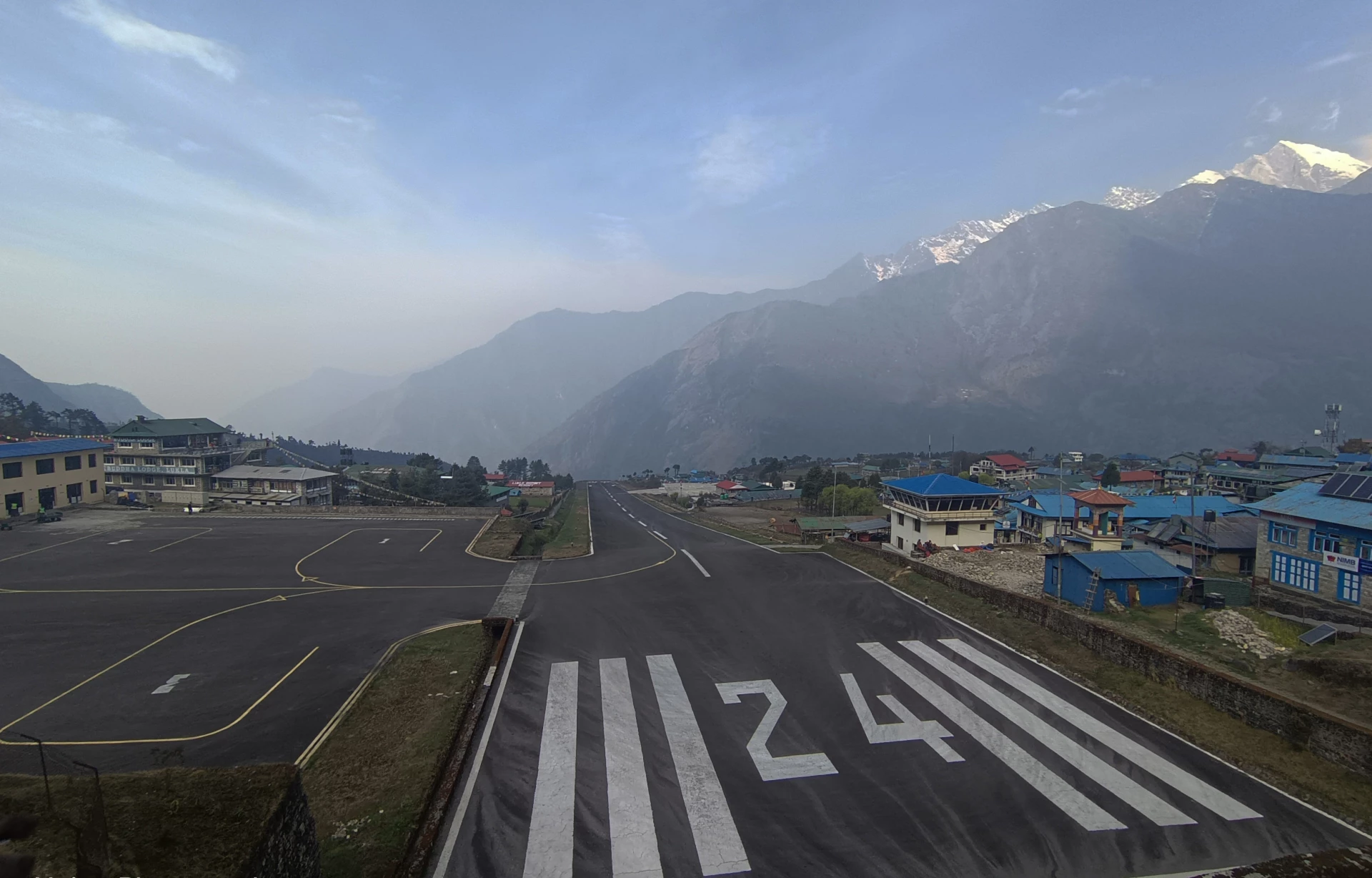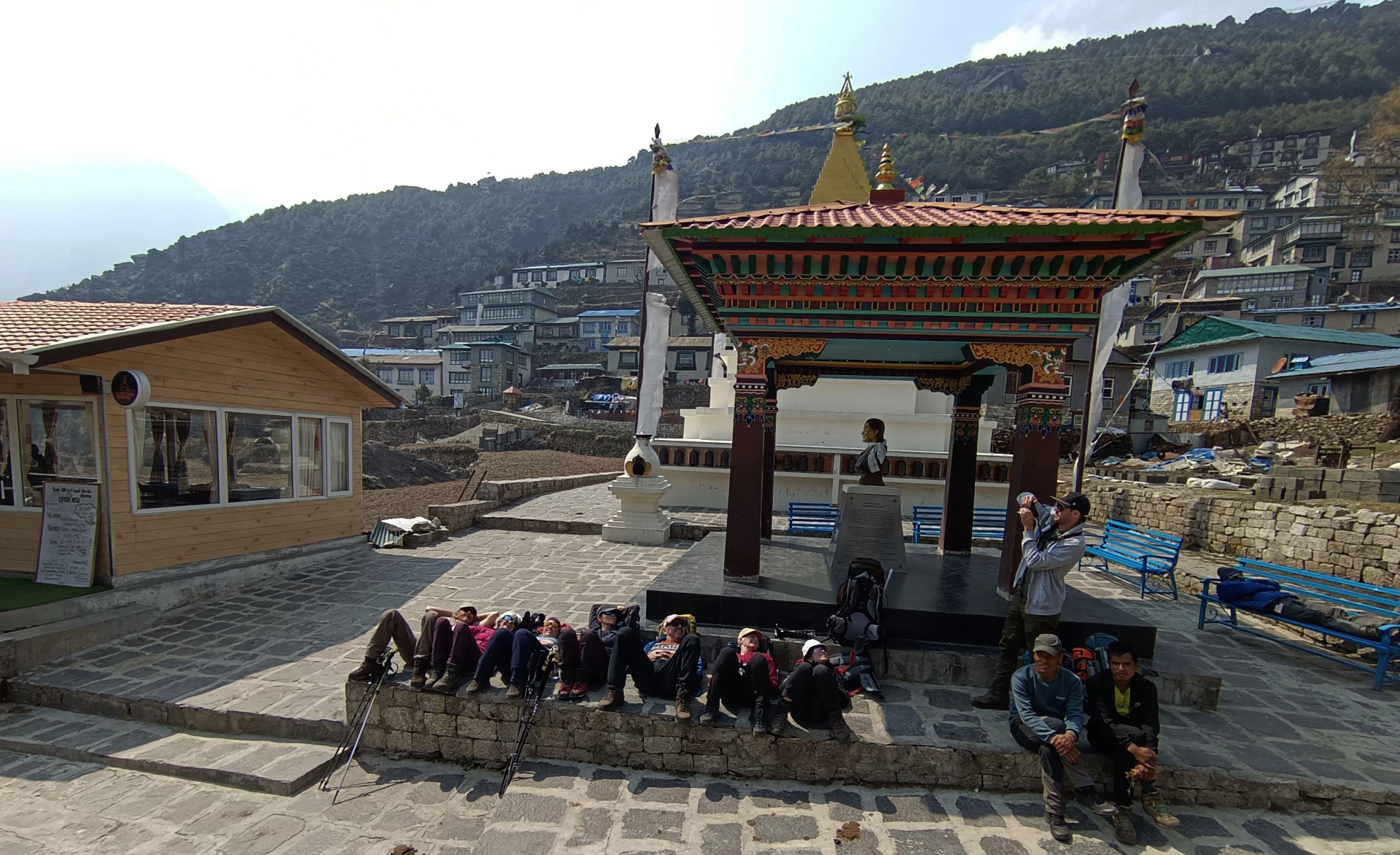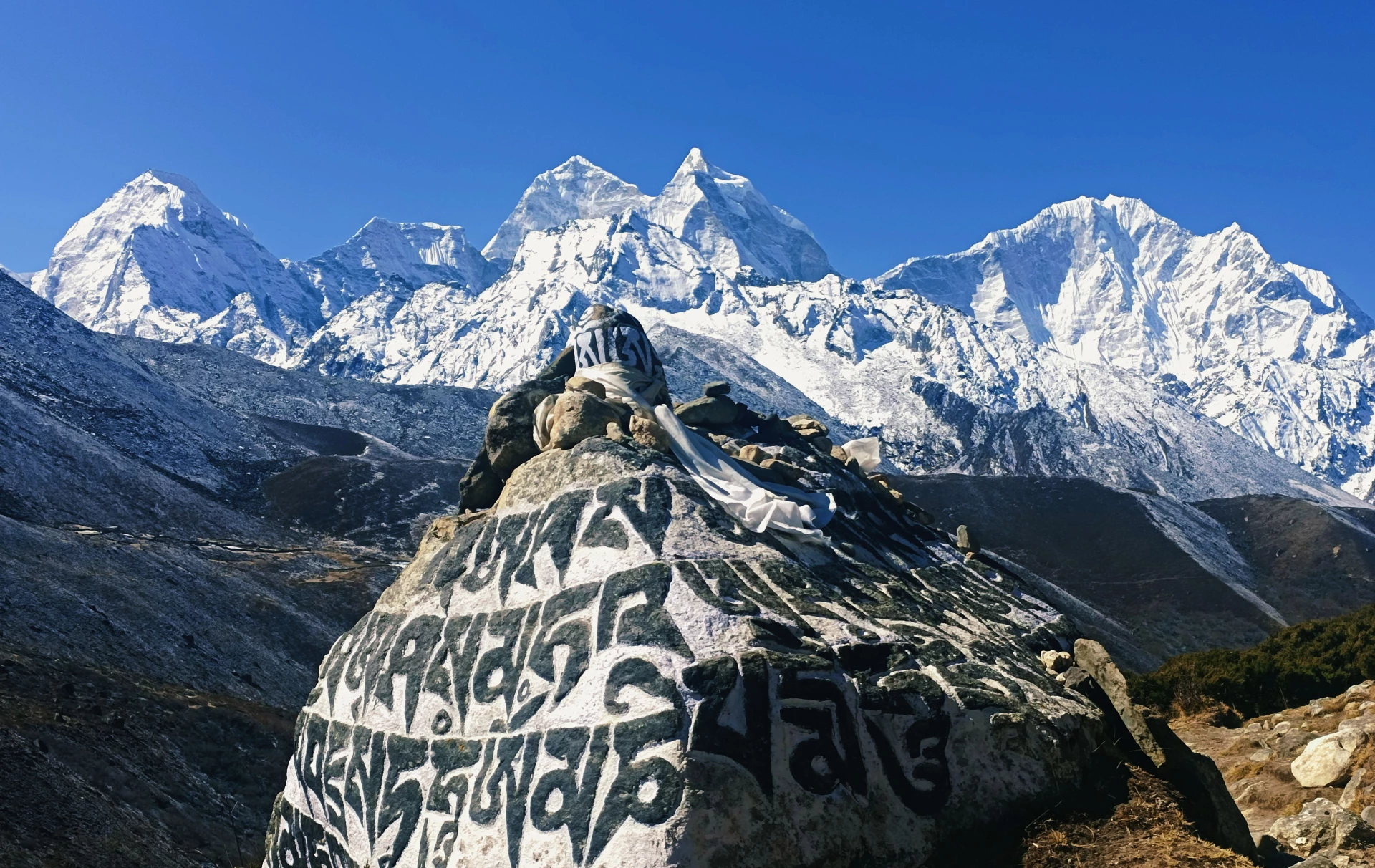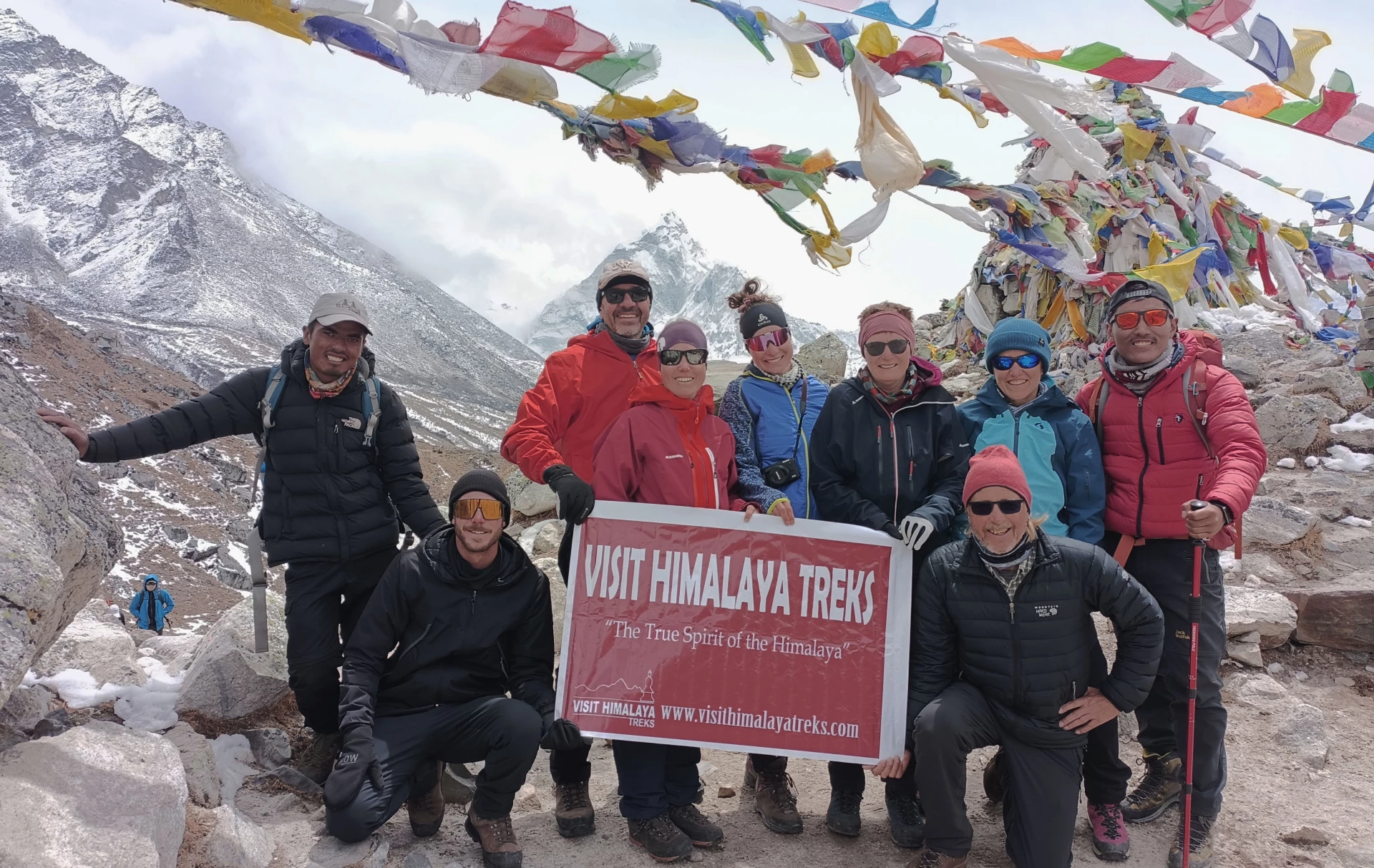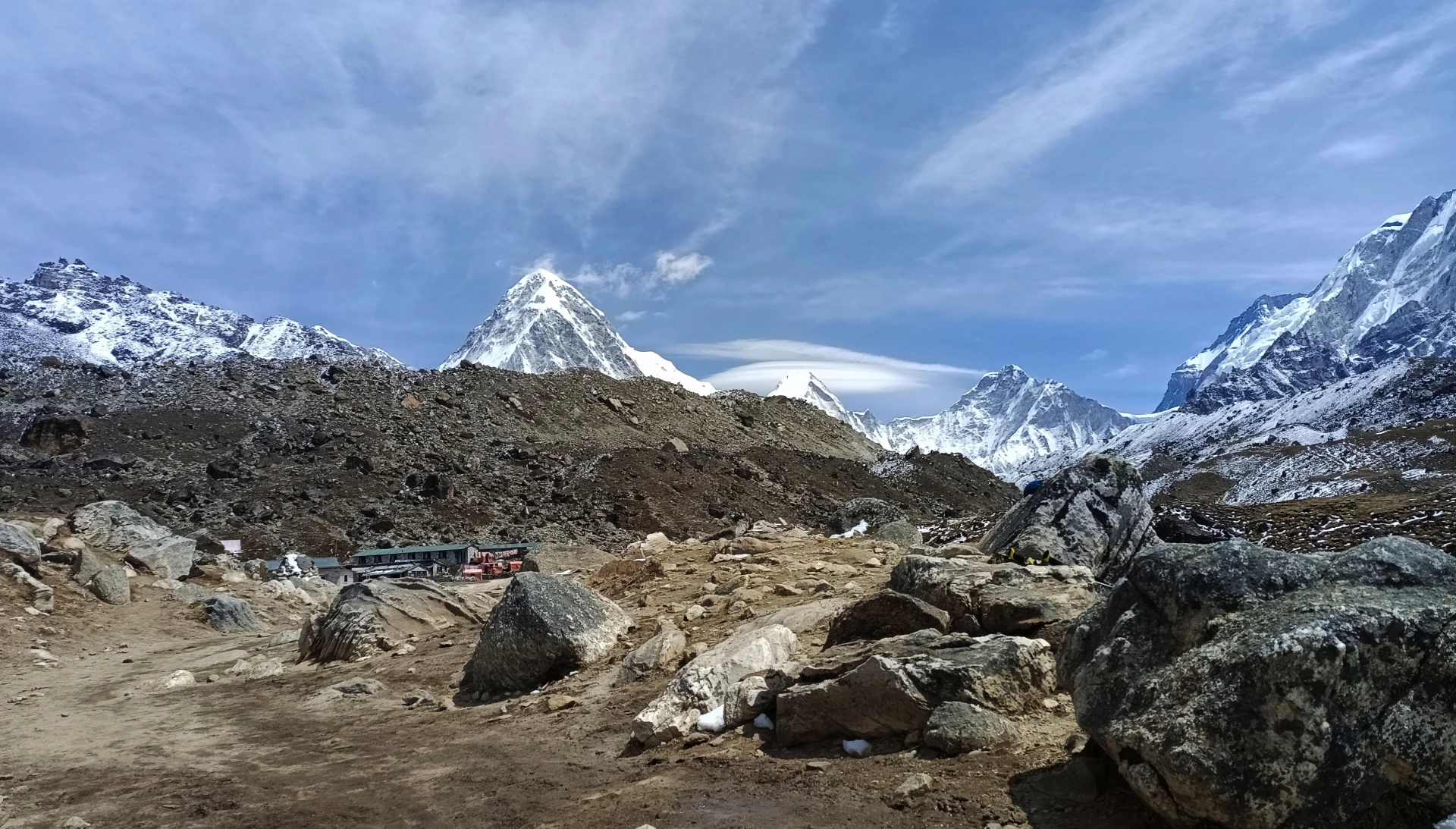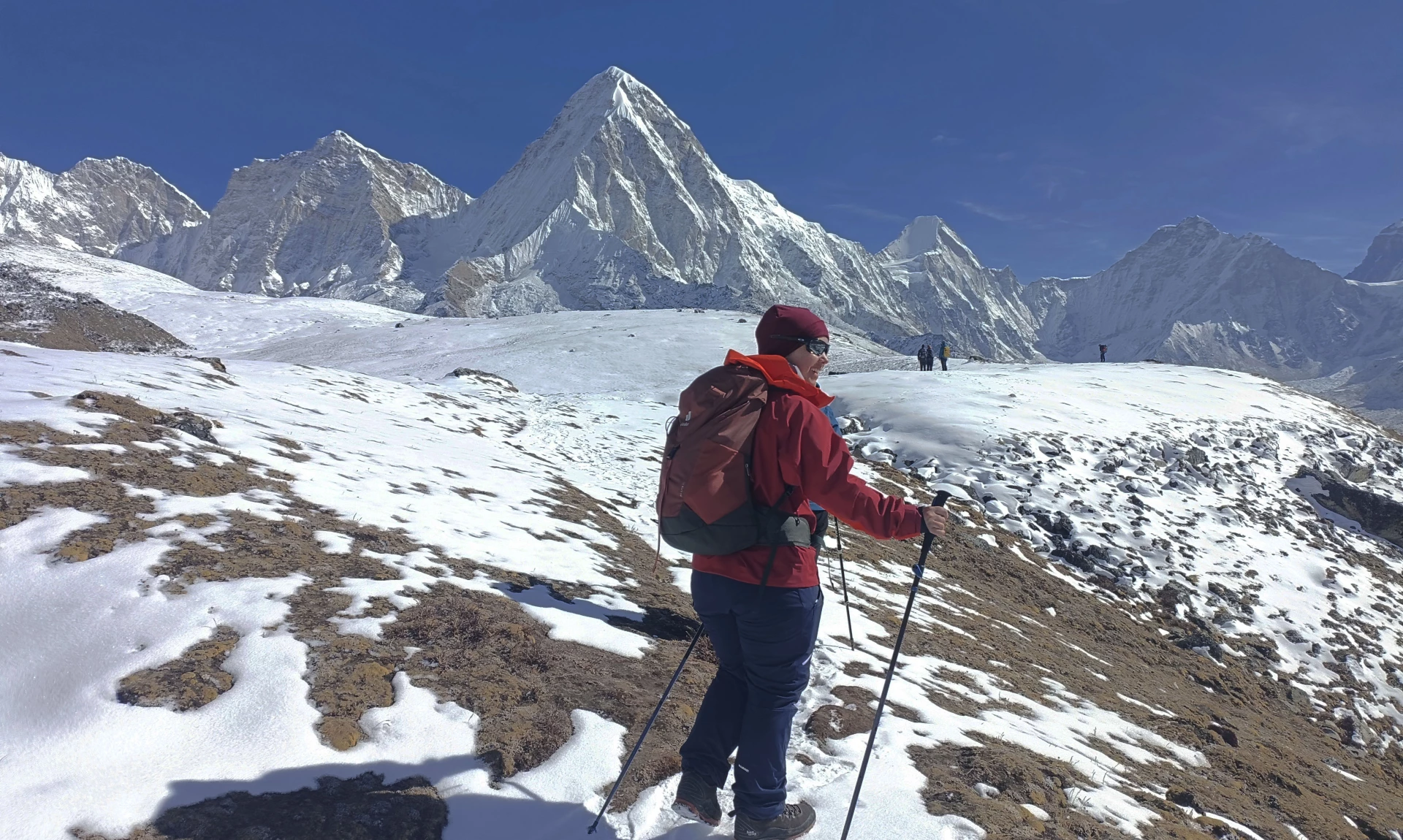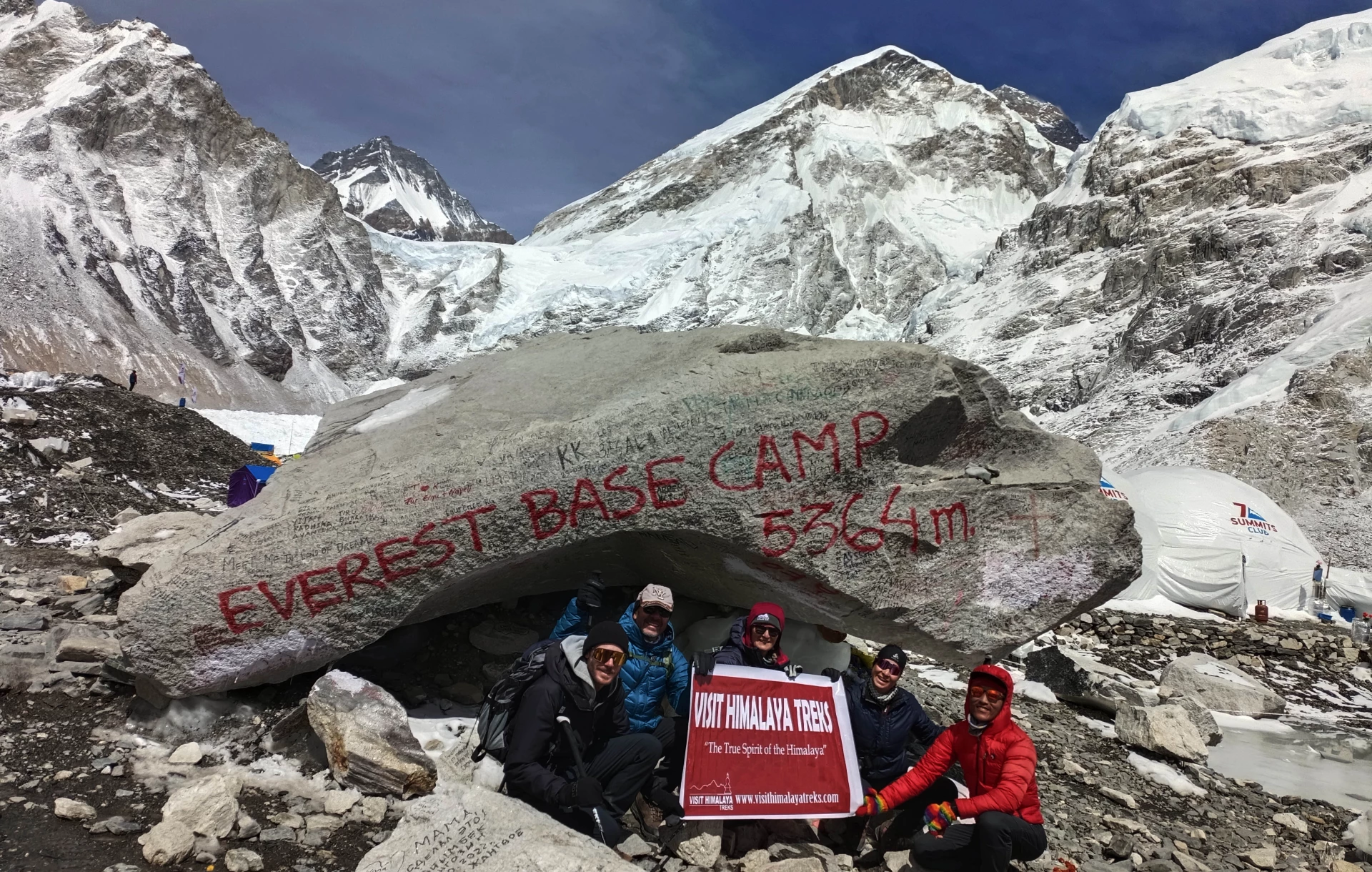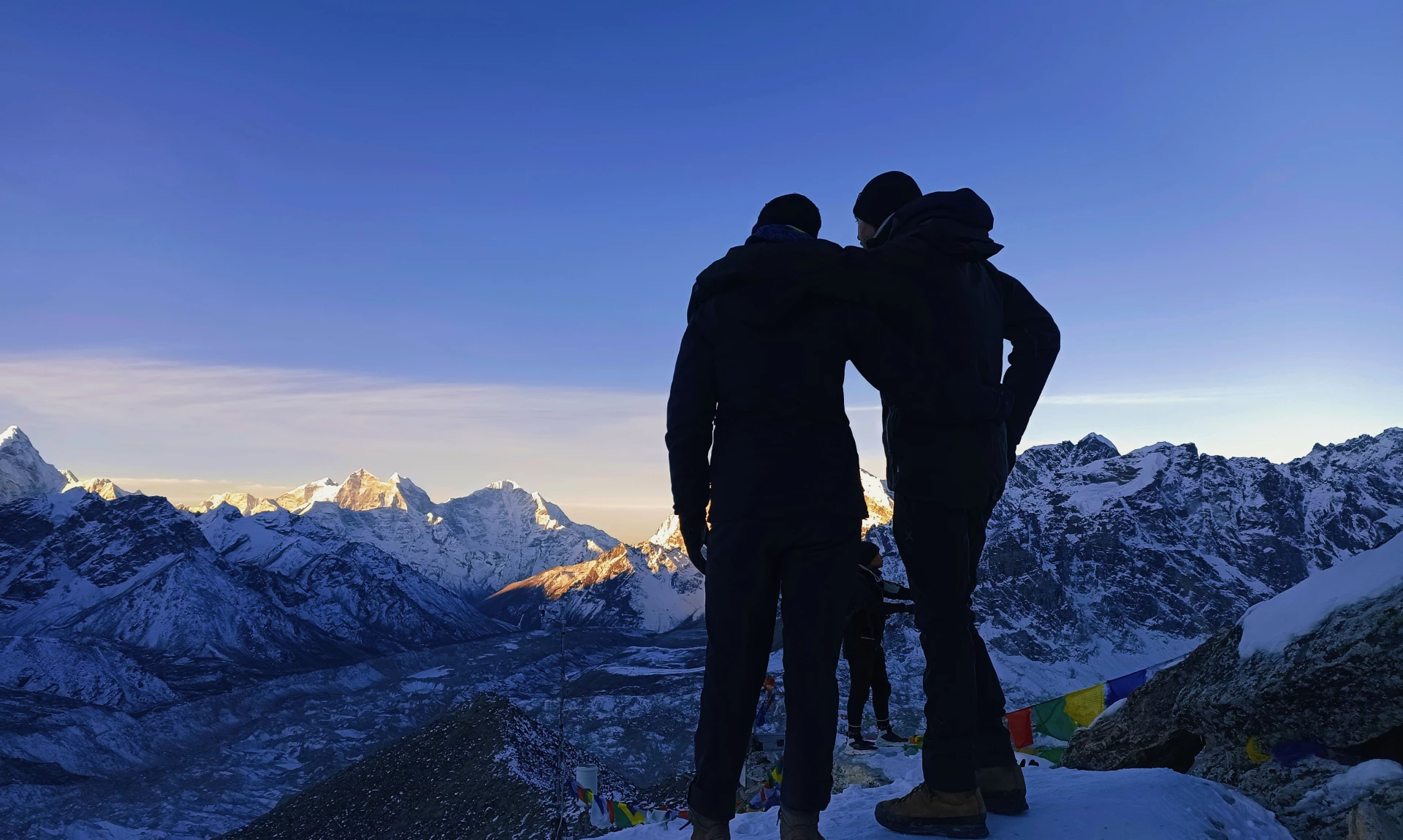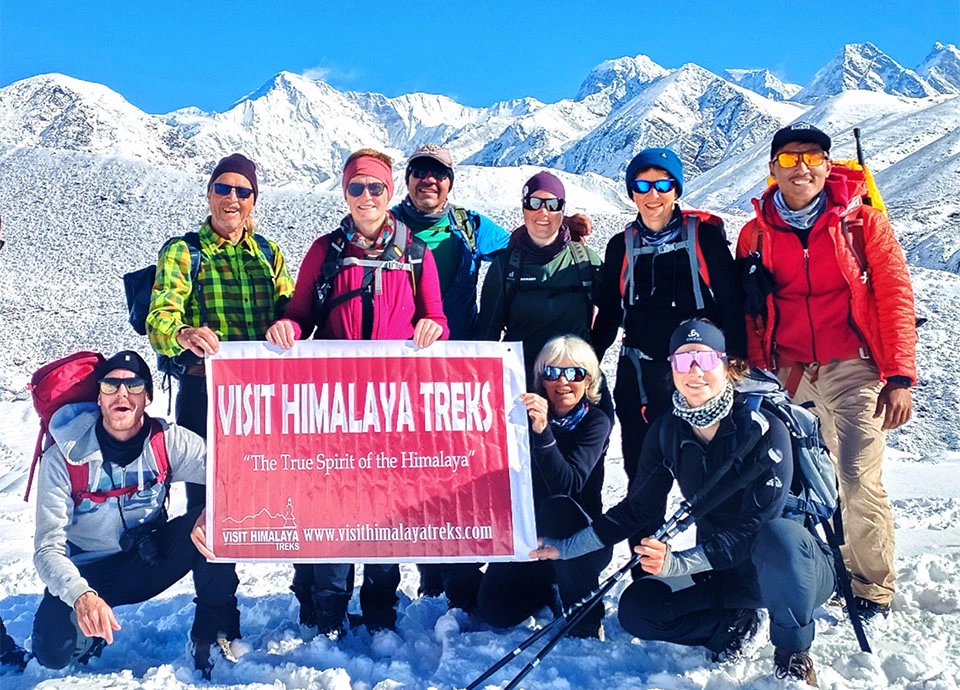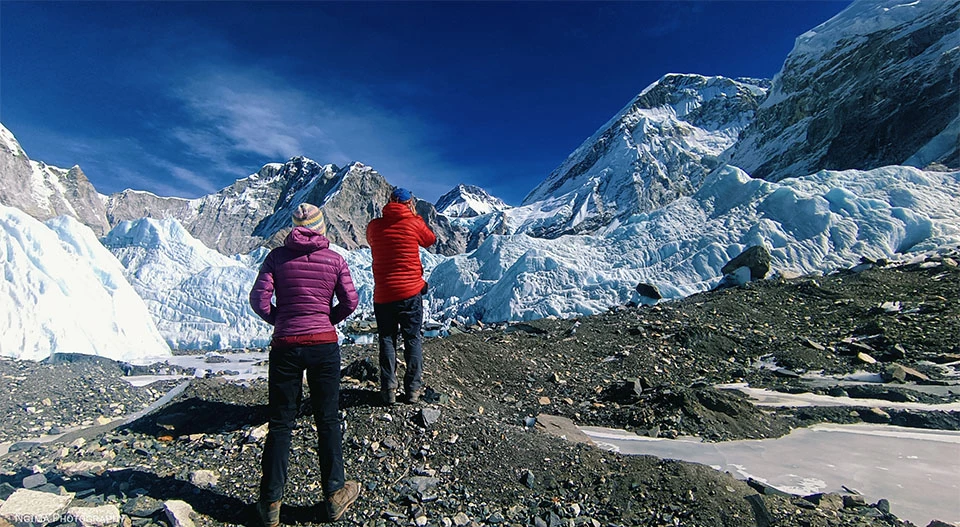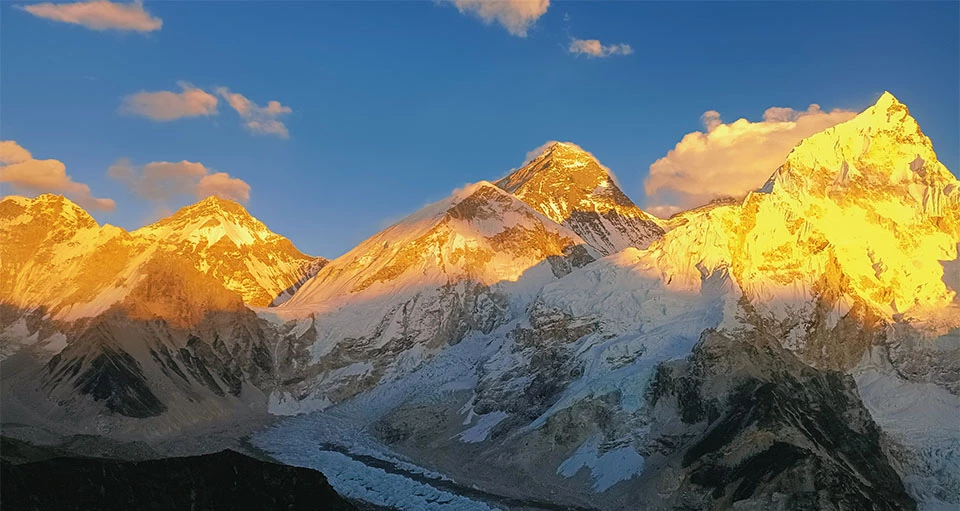The Everest Base Camp 14-days Trek is Nepal's most popular Trekking, offering trekkers the greatest experience of an enthusiastic trekking excursion in the icy Everest region.
The Everest Base Camp 14-days Trekking opens the door to exhilarating trekking in the gloom of the highest mountain in the world. EBC Trekking adventure immerses you in the Himalayan way of life in Eastern Nepal as it traverses the vast Alpine terrain of the Everest region beneath the clouds. Each step to the Everest base camp flows with enthusiasm and thrilling experiences. The Sherpa community's rich culture and lifestyle enhance the trek's attractiveness.
The world's largest peak, "Mount Everest," greets you with a cheerful encounter, comprising various delightful aspects such as icefalls, glaciers, waterfalls, a suspension bridge, and close-up views of neighboring mountains. The Everest Base Camp 14-days Trek is Nepal's most popular expedition, offering trekkers the greatest experience of an enthusiastic trekking excursion in the icy Everest region.
Everest Base Camp Trekking Highlights.
- Scenic mountain flight to Lukla Airport (Tenzing Hillary airstrip).
- Follow in the footsteps of Tenzing and Hillary through the Sherpa Heritage, along the banks of the Dudhkosi River.
- Cross the suspension bridges with scenic views of waterfalls and rivers.
- Explore Namche Bazaar and its surroundings on an acclimatization day.
- Trek to Kala Patthar (5,644 m), the highest point of the expedition, and obtain a 360 panorama of the Everest Region.
- Get a magnificent perspective of the Khumbu Glacier and Ice Falls.
- Admire the stunning view of "Mount Everest," the highest peak in the world, from the luxurious Everest View Hotel.
- Appreciate the outstanding vistas of Mt. Pumori, Island Peak, Ama Dablam, Lhotse, Nuptse, and Cho Oyu.
- Experience the chilly atmosphere upon arriving at the majestic Everest Base Camp at 5,364 meters.
- Trek through Sagarmatha National Park's lush vegetation, encountering Rhododendron forests and endangered wildlife.
Experience the daily lives of the Sherpa Community.
The 14-days Everest Base Camp Trek exposes you deep into the picturesque Sherpa community in the Everest region. With a greater focus on tourism and agriculture, these settlements serve as a representation of the Eastern Himalayan geographical region. The magnificent and active town of Namche Bazaar, lying just underneath Mount Everest, serves as the community's core. While wandering around Namche Bazaar, you may discover many traditional items associated with Sherpa ethnicity and the practice of Buddhism.
Trekking via the trail that passes through the exquisite settlements of Tengboche, Pangboche, and Dingboche delivers another heavenly experience within the Sherpa community. The monasteries around here are among Nepal's most popular and significant monasteries, showcasing Tibetan Nepalese culture and heritage. Tengboche offers a spectacular perspective of Ama Dablam, Nuptse, Lhotse, and Sagarmatha (Everest). The flickering prayer flags, mani walls, stone sculptures, and the opportunity to participate in the customary festivities of the Tibetan Nepalese community add to the vibrancy of the trek.
Thrilling Flight to Lukla.
The 14-days Everest Base Camp Trek begins with an exciting flight from Kathmandu to Lukla. The flight on the initial leg of the expedition provides the finest thrill before the trek. Tenzing Hillary Airport in Lukla is one of the world's most hazardous airports. It takes around 35 minutes to fly from Kathmandu to Lukla; however, due to inclement air traffic, there may be a flight from Ramecchap to Lukla. Flights from Kathmandu to Lukla are operated by small-town Otter and Dornier aircraft such as Summit Air, Sita Air, and Tara Air. The aircraft takes you over the stunning Eastern Highlands.
The entire aerial glimpse of the Nuptse, Everest, and Lhotse is visible from the window. Before landing, the aircraft stays low from the cliffs and touches down at the airstrip in Lukla. The lovely hamlet of Lukla offers the first view of the majestic mountains to the north, and approaching the settlement seems like entering paradise. The first destination following the flight is Lukla, which is where the Everest Base Camp 14-day trekking begins. The settlement of Lukla becomes a beautiful place to admire when the weather turns clear. For more information about the Lukla Scenic flight to Lukla Airport.
The 14 days Everest Base Camp Trekking Itinerary,
Day 01: Arrival at Tribhuvan International Airport of Kathmandu and Drive to the hotel (1,350m/4,429ft) – 20 mins Drive
Day 02: Fly to Lukla from Kathmandu or drive to Ramechhap and fly to Lukla and then trek to Phakding (2,610m/8,562ft) – 3 hours trek
Day 03: Trek from Phadking to Namche Bazaar (3,440m/11,286ft) – 5 -6 hours trek
Day 04: Acclimatization day at Namche. Short Hike to Everest View Hotel and back to Namche
Day 05: Trek From Namche Bazaar to Tengboche (3,860m/12,664ft)– 6 hours trek
Day 06: Trek from Tengboche to Dingboche (4,410m/14,468ft) – 6 hours trek
Day 07: Acclimatization Day, Hike to Nangkartsang Peak (5616m/ 18425 ft) and back.
Day 08: Trek from Dingboce to Lobuche (4,910m/16,106ft) – 4 to 5 hours trek.
Day 09: Trek from Lobuche to Everest Base Camp (5,364m/17,598ft) via Gorakshep and trek back to Gorakshep (5,164m/16,942ft) – 3 hours trek
Day 10: Hike to Kala Patthar (5,545m/18,192ft) and then, Descend to Pheriche (4,288m/14,070ft) – 8 hours trek.
Day 11: Trek from Pheriche to Namche Bazaar -8 hours trek.
Day 12: Trek from Namche Bazaar to Lukla -7 hours trek.
Day 13: Flight back to Kathmandu or Manthali/Ramechhap from Lukla and same-day drive to Kathmandu.
Day 14: Drive to the Airport for Final Departure.
Best Season for Everest Base Camp Trek.
The Everest Region's unpredictable weather may lead to lots of situations during the trek. Throughout the year, the Eastern region of Nepal receives significant rainfall and snowfall. The 14-days Everest Base Camp trek goes extremely well and becomes enjoyable with the pleasant weather and best time of the year. Thus, it's crucial to have some understanding of the Everest region's weather patterns before starting the Everest Base Camp 14 days Trek.
Spring Season (March to May)
This is the best time to embark on trekking to Everest Base Camp. A significant amount of snow is left behind as winter departs the Everest Region. The ideal season for trekking to Everest Base Camp is from the beginning of March until the end of May. With the pleasant weather, one can appreciate the breathtaking views of the Himalayas as well as the lush greenery that surrounds the Everest region. In mid-May, there's a chance of light rain, but it won't interfere with trekking. It is possible to do an enjoyable trek in the spring that offers stunning views of the surrounding Everest region and the mountains.
Temperature:
Daytime: 10°C to 15°C
Nighttime: 0°C to -10°C
Summer/Monsoon Season (June to August)
The summer season provides considerable rains to the Everest Region. The chilly air from the Bay of Bengal carries considerable rainfall and strikes the Everest Region, resulting in severe rain. With the severe rain, there is a risk of flash flooding and landslides, which might disrupt the route. On the other hand, it may be beneficial to check the weather before the excursion. The nicest experience is when you see Mount Everest in the summertime when there are no clouds or fog. The monsoon rains enhance the lushness of the environment, making the valleys and slopes a brilliant green. There will also be fewer trekkers and traffic during this season.
Temperature
Daytime: 15°C to 20°C
Nighttime: 5°C to 10°C
Autumn Season (September to November)
The autumn season is optimal for the 14-days Everest Base Camp trip. The sky will be clear, with no risk of rain. The mild wind from the west clears the air of humidity and improves visibility. Beautiful rhododendron and pine forests dominate the whole lower Everest Region. The warm temperatures make for the finest trekking experience throughout the autumn season. This month is when one of the greatest festivals celebrated by the Nepalese people Dashain and Tihar takes place, and it's possible to come across festival celebrations going on while trekking.
Temperature
Daytime: 10°C to 15°C
Nighttime: 0°C to -15°C
Winter Season (December to February)
The winter season in the Everest region is a pleasing sight to behold. The crispness and snowy scenery make the trek spectacular. The Everest area is completely covered with snow, making the terrain icy. During this season, there will be fewer trekkers, making the trek calmer and allowing one to fully appreciate the Everest Region. However, the severe cold air and heavy snow can disrupt the trail, making it tough to complete during this season.
Temperature
Daytime: 0°C to 5°C
Nighttime:-10°C to -20°C
Permits for Everest Base Camp Trek.
The Sagarmatha National Park Entry Permit, Khumbu Pasang Lhamu Rural Municipality Permit, and Trekkers’ Information Management System are the essential permits required for the Everest Base Camp trekking in Nepal.
Sagarmatha National Park Permit
During the Everest Base Camp trek, a Sagarmatha National Park permit is necessary to enter the Sagarmatha National Park, which includes the Everest region. The fee helps to conserve and maintain the park, as well as to assist the surrounding communities.
Sagarmatha National Park Permit Costs
ØFor foreigners: NPR 3,000 (USD 25)
ØFor SAARC nationals: NPR 1,500 (USD 12 )
ØFor Nepali visitors citizens: NPR 100.
ØFor Trekking guide NPR 1500.
How to get Sagarmatha National Park Permit?
Obtaining a Sagarmatha National Park permit for an Everest Base Camp trek is an easy procedure. You may obtain the permit at the Nepal Tourism Board office in Kathmandu or Monjo, the Sagarmatha National Park entry point. You will need your passport copy to get a permit. Sagarmatha National Park Permit payments are made in Nepalese Currency.
Khumbu Pasang Lhamu Rural Municipality Permit
The permit is necessary for all trekkers entering the Everest region. The fee helps in funding community development efforts and infrastructures in the Everest region.
Khumbu Pasang Lhamu Rural Municipality Permit Costs
The cost of the Khumbu Pasang Rural Municipality permit is the same for trekkers from any nation, including citizens of Nepal. The cost is about 24 USD which is NPR 3,000.
How to get a Khumbu Pasang Lhamu Rural Municipality Permit?
The permit is easily accessible at Lukla or Monjo which falls in the trial of Lukla. All you need is your passport, copy, and Nepalese currency to pay for a permit.
TIMS (Trekkers’ Information Management System)
For the Everest region, the Khumbu Pasang Lhamu Rural Municipality Permit took the place of the TIMS (Trekkers' Information Management System) card.
All mentioned permits are included in the total trip cost provided, so there are no hidden additional costs for the permits.
Accommodation and Meals on Everest Base Camp Trek
Trekkers can expect a range of accommodation and meal options throughout their Everest Base Camp 14-days trek, all of which are intended to help them as they trek through the challenging trial of the Everest Region.
Meals.
The meals available along the route are mainly designed to provide essential energy and calories. Breakfast dishes commonly include cereal, toast with jam or honey, egg items, muesli, porridge served in a variety of ways, and pancakes. Tea, coffee, and hot chocolate are also widely available.
For lunch and evening, trekkers may eat healthy specialties like Dal Bhat, a classic Nepali meal made up of rice, bean soup, vegetable curry, and pickles. Other popular alternatives include fried rice or noodles with vegetables, eggs, pasta meals like spaghetti and macaroni, Tibetan-style dumplings known as momos, and a range of soups such as vegetable, chicken, and garlic. Some bigger neighborhoods, such as Namche Bazaar, may also provide pizzas. Some tea rooms serve snacks such as chocolate bars, cookies, and nuts, as well as freshly baked goods such as apple pie. Trekkers need to stay hydrated, and they can buy bottled water or utilize tap water filtered by tablets or filters.
Accommodation.
Tea houses and lodges, which offer simple yet cozy accommodation, are the usual overnight options along the trail. Trekkers should carry their sleeping bags for extra warmth, however, these tea houses are frequently located along the trekking route and offer basic comforts like twin mattresses with blankets and pillows in private rooms. Most restrooms and toilets are shared, with different facilities available in different places, ranging from simple squat toilets to more modern Western-style toilets. Most of the time, the rooms are not heated, and at night, especially at higher elevations, the temperature can drop dramatically.
Tea houses may provide extra facilities like Wi-Fi and hot showers at an additional cost in settlements like Namche Bazaar, although the connection can be poor and irregular. Overall, the Everest Base Camp trek's meals and accommodation are planned to accommodate trekkers' requirements, offering necessary rest and nutrition while maximizing the experience of the breathtaking Himalayan scenery.
Everest Base Camp Trek Difficulty level.
Altitude.
The Everest Base Camp 14 days Trek has a Moderate to Demanding difficulty level. During two weeks, the trek requires crossing tough, uneven terrain as well as managing severe ascents and descends. A major determining factor is altitude, with trekkers reaching 5,364 meters (17,598 feet) at Everest Base Camp and even higher at 5,545 meters (18,192 feet) at Kala Patthar. This higher elevation increases the likelihood of altitude sickness, which may affect trekkers of any level of physical fitness. It is important to properly acclimate, which includes taking rest days and trekking slowly, to reduce this danger. In light of this, we designed our EBC Trekking itinerary so that trekkers may get the rest and leisure they need. Our itinerary includes two days for acclimatization: the first at Namche Bazaar and the second at Dingboche.
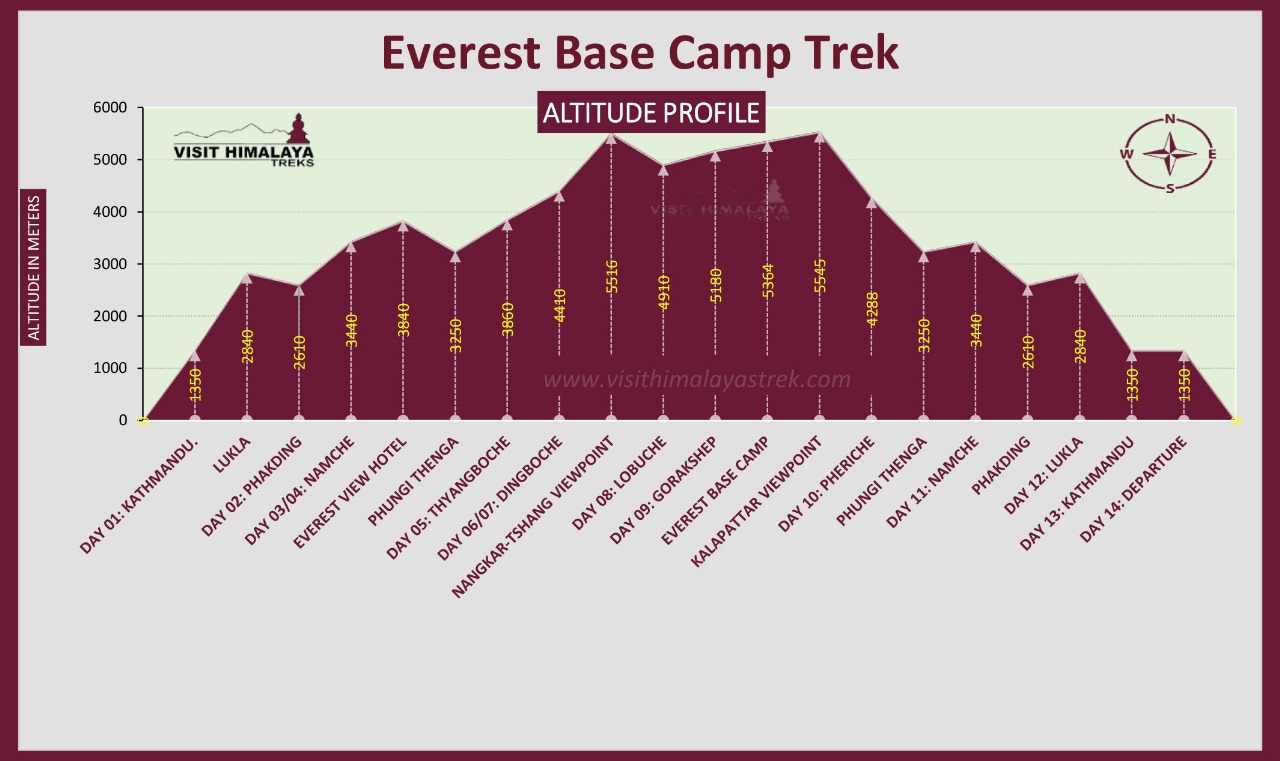
The 14 Days Everest Base Camp Trekking Altitude Chart.
Weather and Routes.
The daily trekking hours range from about 5 to 8 hours, and the trails are typically rough and uphill and downhill, which can be physically challenging. Weather circumstances increase the challenge since temperatures may drop dramatically, particularly at higher elevations, and the weather can change quickly. Breathing becomes more difficult due to the thin air and decreased oxygen levels, increasing the amount of effort. Despite these difficulties, the trek is basic, requiring neither specialist climbing gear nor abilities. But endurance, stamina, and a strong cardiovascular system are essential to complete the trek with no issues.
Preparation for Difficulties on the EBC trek.
Cardiovascular training, strength training, and trekking practice with a weighted backpack should all be part of the preparation for the trek. Because of the great distance and demanding nature of the trek, mental preparation is just as essential as physical preparation. The assistance of guides and porters can help with some of the physical challenges, but trekkers must be prepared to confront the natural obstacles of trekking to one of the world's most famous Everest Base Camp Trek.
Essential Gears for Everest Base Camp Trek.
When preparing for the Everest Base Camp trek, having the right gear is essential for your comfort, safety, and overall trekking experience. Here is a comprehensive list of necessary equipment;
Clothing
Base Layers
Thermal Tops and Bottoms: layers that drain away moisture and provide insulation to keep you warm.
Insulating Layers.
Fleece or Down Jacket: Provides warmth in chilly weather.
External Layers
Waterproof jacket and trousers: Protect against rain, snow, and wind.
Pants and Shorts for trekking
Convertible pants: Flexible and appropriate for a variety of weather situations.
T-shirts for trekking
Breathable Shirts: They keep you hydrated while remaining comfortable.
Hand gloves
Interior Gloves: Not too heavy for moderate weather.
Outer Gloves: Insulated and resistant to cold weather.
Caps
Sun Hat: Provides solar protection.
Warm Hat: Winter-proof insulated hat.
A Neck cover or Scarf
Increases warmth and offers protection against cold and pollutants.
Footwears
Boots for Trekking
Durable and Waterproof: Provides support for the ankles and traction on varying surfaces. Make sure you have used it previously, not a brand-new one.
Trekking socks
Dry and Warm: Preserves moisture while providing warmth for your feet.
Gaiters
Snow and Dirt Protection: Avoids both dirt and water from getting inside your boots.
Internal Footwears
Convenient and lightweight: Ideal for use in tea houses following an exhausting day of trekking
Gears and Equipment
Backpack
Perfect for carrying necessities during the day, a daypack of 30–40 liters is recommended.
Duffel Bags
Visit Himalaya Treks provides 80 liters of a duffel bag for packing your trekking gear which is fully waterproof. While on the trek porter will carry your duffal bag.
Sleeping bags
Perfect for at high altitudes which cover at least -30 degrees.
Covering for sleeping bags
Keeps the sleeping bag clean while adding a few degrees of warmth.
Trekking poles
Adjustable and lightweight for stability on rough surfaces.
Headlamp
Necessary for use at night and in the early morning.
Items for Personal Use
Water bottles
One to Two liters of bottle and make sure to drink plenty of water.
Tablets or Filter for Water Purification
Make sure that the water is safe for consumption.
Personal First Aid Pack
This includes painkillers, sunburn treatment, altitude sickness medication, and any personal medicines.
Personal hygiene
Wet wipes, toothbrushes, toothpaste, and biodegradable soap are recommended.
Sun protection measures
Sunglasses with UV Protection: Protect your eyes from harmful UV radiation.
Sunscreen (SPF 50+): Prevents sunburn on your skin.
SPF-infused lip balm: shields lips from chapping.
Extra Items
Earbuds
Effective in shared lodgings for reducing noise.
Travel Cushion
Improves healthier sleep.
Diaries and Books
Provides entertainment and lets you record the places you visit.
The 14 Days Everest Base Camp Trekking Cost for 2025 and 2026.
Discover the adventure of a lifetime with Visit Himalaya Treks' standard 14-days Everest Base Camp Trek, available at the competitive rate of USD 1,500 per person. Whether you're planning your journey for 2025 or 2026, our comprehensive table outlines the costs of this unforgettable experience for various group sizes, ensuring that you have all the information you need to plan your trip.
When it comes to the Everest Base Camp trek, costs can vary based on your unique needs and preferences. As you delve into your research, you'll encounter a range of price points from different travel agencies, each offering its own set of services tailored to your trekking experience.
Please review the following details for the 14-days Everest base camp trek cost which is structured based on group size.
| Number of Pax. |
Price. |
| 1 |
USD: 1500 |
| 2 - 5 |
USD: 1400 |
| 6 - 9 |
USD: 1350 |
| 10 + |
USD: 1300 |

